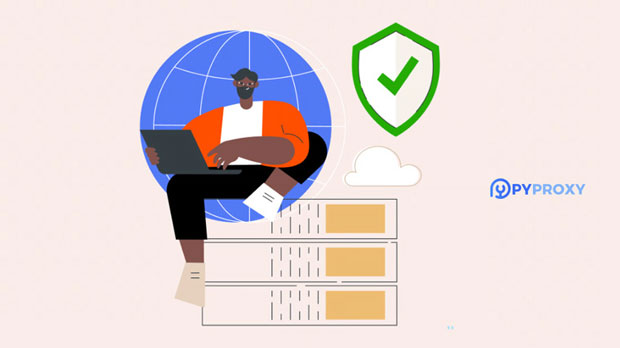Free proxy services, particularly socks5 proxies, are often appealing due to their no-cost nature, but users frequently encounter connection issues. This can be frustrating, especially for those who depend on proxies for tasks like secure browsing, anonymity, or accessing geo-restricted content. Understanding why free proxy IP SOCKS5 connections fail and identifying the most common problems can help users troubleshoot and improve their experience. This article will explore these challenges in detail, including technical factors, limitations of free proxies, and practical tips for overcoming these issues. Understanding the socks5 proxy ProtocolSOCKS5 is a protocol designed to route network traffic between clients and servers through a third-party server, offering users anonymity and the ability to bypass geo-blocked content. Unlike HTTP proxies, SOCKS5 supports any kind of traffic, including peer-to-peer (P2P), gaming, and email. It is considered a versatile and efficient protocol, especially for tasks requiring greater security.However, while SOCKS5 proxies can provide many benefits, the free versions often come with several limitations that can impact performance. These limitations are one of the main reasons why users face difficulties when trying to establish a connection.Common Problems with Free SOCKS5 Proxies1. Server Overload and High Traffic VolumeOne of the most common reasons a free socks5 proxy fails to connect is server overload. Free proxy services are often used by a large number of people, leading to excessive traffic on a single server. This can result in slow speeds, dropped connections, or complete failure to connect. Since these proxies are provided for free, the server infrastructure is usually not designed to handle large-scale, simultaneous usage.2. Blocked IP AddressesMany websites and services actively block traffic from known proxy IPs to prevent abuse or maintain security. Free proxies, being widely used, often get flagged by these services, leading to blocked IP addresses. As a result, users may find that their SOCKS5 connection attempts are blocked even before they can establish a connection.3. Geographical RestrictionsFree SOCKS5 proxies often come with geographical restrictions, meaning that they are only available in specific regions or countries. If a user tries to connect from an unsupported region, the connection attempt may fail. Moreover, many free proxies do not offer IP rotation, so if a user repeatedly tries to connect from the same IP, the proxy server could be blacklisted or become inaccessible.4. Unreliable Service and Maintenance IssuesFree proxy services typically lack consistent maintenance and support. As a result, users may experience long downtimes or temporary issues with the server. Unlike paid proxy services that are professionally maintained and updated, free proxies are more likely to experience frequent outages and inconsistent service levels, leading to connectivity issues.5. Security VulnerabilitiesAlthough SOCKS5 proxies are generally more secure than other proxy protocols, free proxies often have security flaws. These proxies are rarely subjected to rigorous security audits, leaving them vulnerable to attacks such as DNS leaks or man-in-the-middle (MITM) attacks. Users relying on free SOCKS5 proxies may unknowingly expose their sensitive data or personal information.Why Free Proxies Are More Prone to Connectivity ProblemsThere are several factors that contribute to the increased likelihood of connectivity issues when using free SOCKS5 proxies:1. Limited ResourcesFree proxies typically have limited server capacity and bandwidth. Providers of free services cannot afford to invest in high-performance servers or global server distribution networks. This means that the proxies tend to be slower, with reduced reliability. Moreover, free services often allocate bandwidth based on user demand, which can result in throttling or connection timeouts.2. Lack of IP RotationMany free SOCKS5 proxies do not provide IP rotation, meaning that the same IP address is used by multiple users for extended periods of time. This can result in the proxy IP being flagged by websites, which in turn leads to blocked connections. Paid proxies, on the other hand, often offer features like rotating IPs, allowing for more stable and secure connections.3. High Risk of AbuseFree proxies are a prime target for malicious activity. Since they are available to anyone, bad actors often exploit these services for activities such as spamming, scraping, or even launching attacks. This increased risk of abuse can lead to blacklisting of IP addresses, making it more difficult for legitimate users to connect.4. No Customer SupportPaid services often come with customer support to help resolve any connectivity or technical issues. In contrast, free proxies rarely offer customer support, leaving users to troubleshoot problems on their own. Without professional assistance, users may find it challenging to identify and fix connection issues effectively.Technical Factors That Impact Free SOCKS5 Proxy ConnectionsSeveral technical issues may prevent users from connecting to a free SOCKS5 proxy. Some of the most common include:1. Incorrect Proxy SettingsIn some cases, users may be using incorrect proxy settings, which can lead to failed connection attempts. SOCKS5 proxies require specific configuration in both the client software and the browser or application being used. If the proxy settings are misconfigured, the connection will not be established.2. Firewall or Antivirus InterferenceFirewalls and antivirus software can sometimes block proxy connections. Free SOCKS5 proxies may also trigger warnings in security software due to the higher risk of misuse. Users should check their firewall or antivirus settings and ensure that the proxy server is not being blocked by these security measures.3. DNS Resolution IssuesA SOCKS5 proxy relies on DNS resolution to map domain names to IP addresses. If there are DNS issues, such as DNS leaks or incorrect DNS settings, users may encounter problems connecting to websites or services. Free proxies often do not offer proper DNS configuration, which can result in unresolved domains or slow browsing speeds.4. Protocol MismatchSome applications or websites may not support the SOCKS5 protocol, leading to connectivity issues. It is essential to ensure that both the proxy server and the application support the same protocol version. For instance, certain games or streaming platforms might require specific protocols or configurations, which can conflict with SOCKS5.How to Overcome Common SOCKS5 Proxy Connection ProblemsTo improve the reliability and performance of free SOCKS5 proxies, users can take several steps:1. Test Multiple Proxy ServersRather than relying on a single free proxy, try testing multiple servers to see if one provides a more stable connection. Many free proxy services offer lists of available proxies; switching between them may help identify a working server.2. Use Proxy Rotator ToolsConsider using third-party tools designed to automatically rotate proxy IPs. These tools can help prevent IP blacklisting and improve connection stability by regularly changing the IP addresses used.3. Check for Software ConflictsEnsure that firewalls, antivirus software, or other security tools are not interfering with the proxy connection. You can try temporarily disabling these programs to see if they are causing the issue.4. Consider Upgrading to a Paid ServiceIf connectivity issues persist despite troubleshooting, users may consider upgrading to a paid SOCKS5 proxy service. Paid services often provide better support, more stable connections, and enhanced security features, leading to a smoother experience.ConclusionWhile free SOCKS5 proxies can offer valuable anonymity and bypassing capabilities, they come with a range of challenges, particularly in terms of connection reliability. Server overload, blocked IP addresses, geographical restrictions, and security vulnerabilities are just a few of the issues that users may face. By understanding these problems and taking the appropriate troubleshooting steps, users can improve their experience. For those who rely on consistent and secure proxy connections, considering a paid service may ultimately be the most effective solution.
Jan 06, 2025
![arrow]()



























































